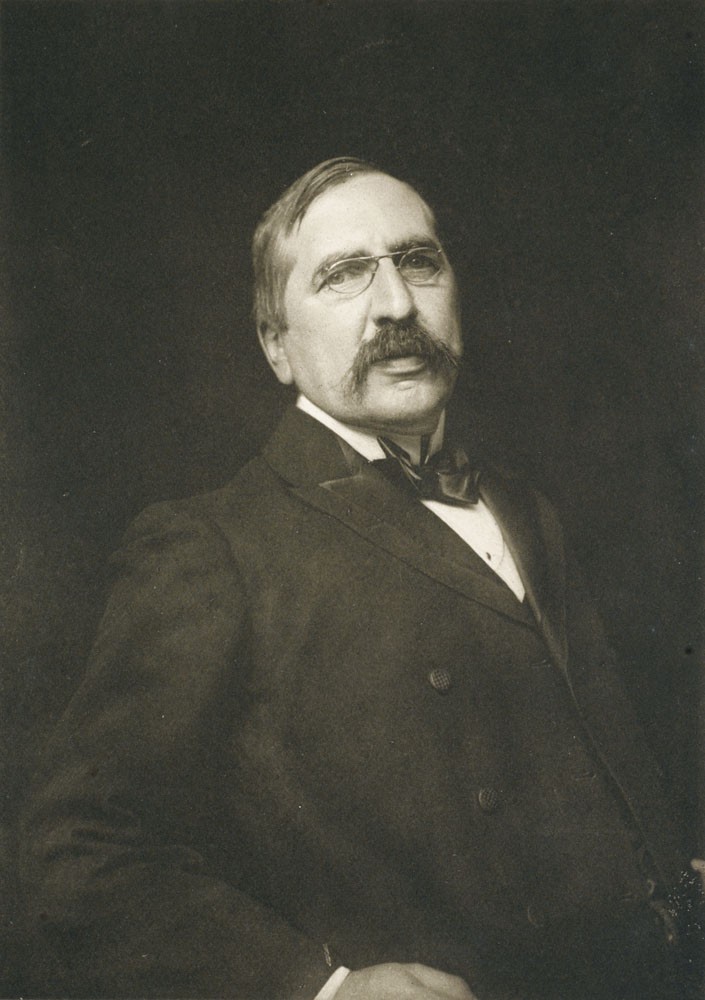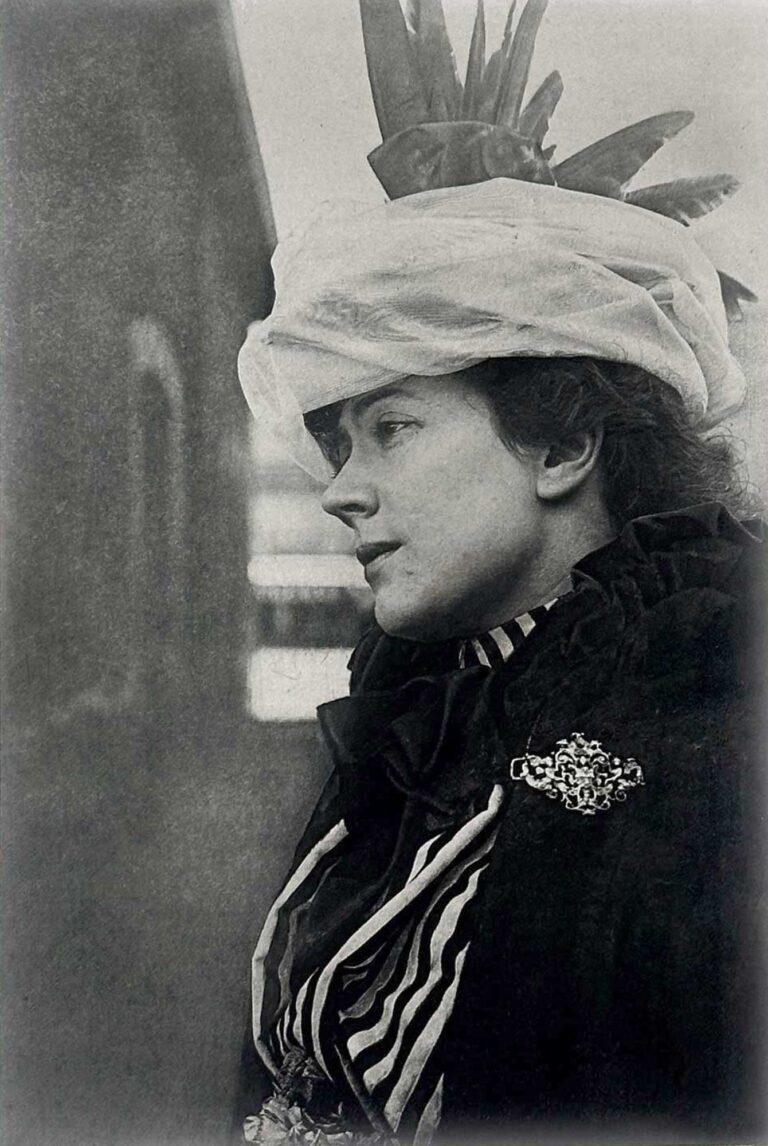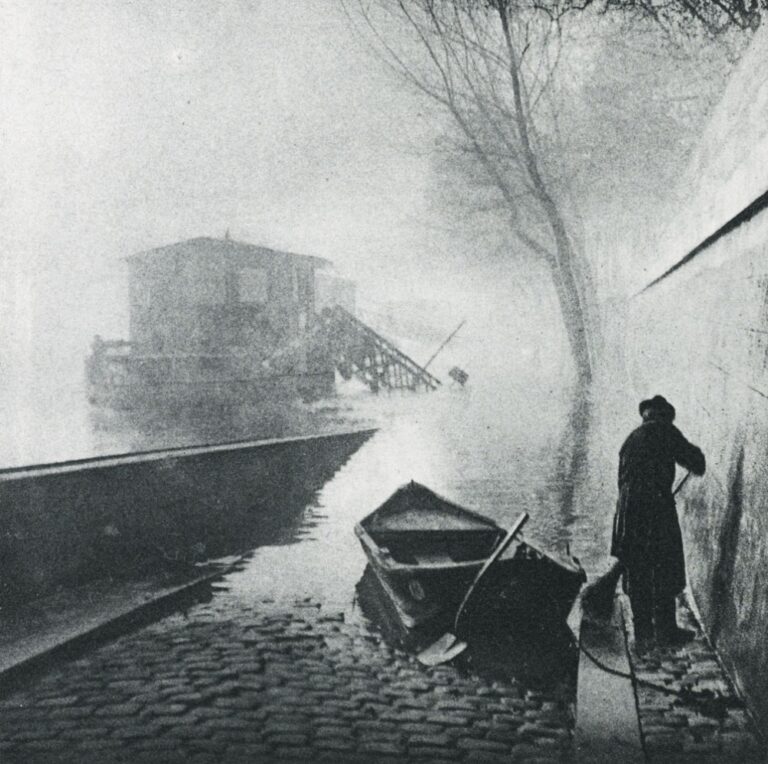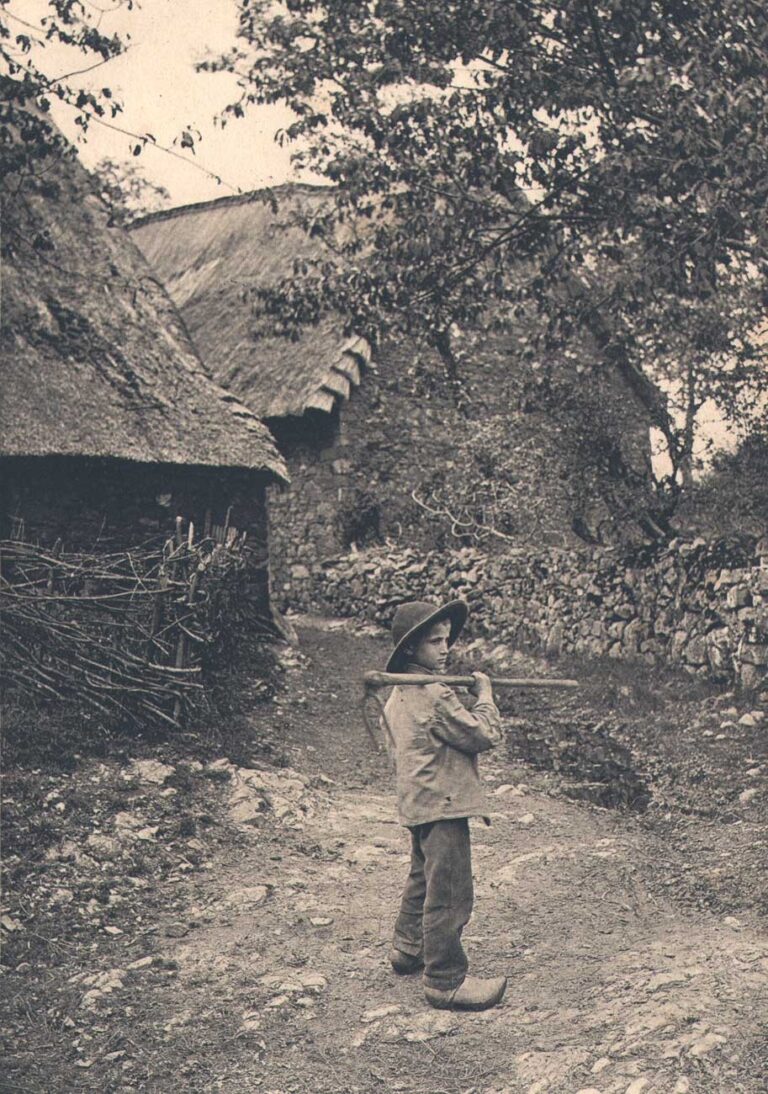
Portrait Studien (Gleeson White)
Hollyer, 1838-1933, was an early member of the Linked Ring Brotherhood, having been elected on June 25th, 1892 and given the pseudonym of Sergeant at Mace.
Frederick Hollyer
“At an early age Frederick Hollyer became immersed in the art world and c.1860 was attracted to photography…As a relaxation Hollyer enjoyed photographing people and for some thirty years his studio was reserved mondays for this purpose only. His close association with leading artists through his main photographic practice led to his taking their portraits. Amonst those he photographed were D.G. Rossetti, Edward Burne-Jones, G.F. Watts, Frederick Leighton, William Morris, Walter Crane, Byam Shaw and John Ruskin. His portraits have rare and unusual qualities. He did not have to conform to the conventionalities of commercial studio portraiture so that most of his sitters were casually and naturally posed, unobtrusively lit, revealing in respect of character and characteristics, and refreshingly unretouched….Contemporary critics put Hollyer into the forefront of creative photographers: “From a fine Hollyer portrait you study the man as he is…these finely modelled heads, set so well in place as regards the decoration of a panel, are also transcripts of personalities-human documents of singular verity that should be amongst the prized treasures of future historians. It is quite possible that many a minor poet or secondary painter may attract the attention of the next century, merely because Mr. Hollyer photographed him.” 1.
His own words go further to illuminate his work:
“The one thing needful for photographers, if they are ever to take a position as artists, is general culture, which includes the study of the work of artists of all other classes. If every photographer would make a real study, for two or three years, of the hands of his sitters, portraiture would take an immense step forward. But the photographer must cease attempting to pose hands and make them pose themselves by giving them some congenial occupation…The photographer who has met a man half a dozen times should know with absolute certainty what is the most characteristic pose and lighting for his face…I think it would be a most useful thing, even from the business point of view, if every photographer would resolve that for every negative made for profit there should be another made for love. The greatest good of the Photographic Salon has been in showing that the best professional photographers could do some of the finest amateur work.” 2.
Notes:
1. Photograms of 1895
2. The Photogram, 1899: “The Value of Studies. A few words with Frederick Hollyer” : pp. 65-9
Both citations extracted from a short biography of Hollyer from : The Linked Ring: The Secession in Photography: 1892-1910 : Margaret F. Harker: 1979: A Royal Photographic Society Publication: pp. 153-4
A Remembrance of Gleeson White
This portrait of J. Gleeson White (1851-1898) by Frederick Hollyer accompanied a lengthy four-page tribute on him in The Photogram shortly after his passing, and was called his favorite portrait. A Renaissance man, White was the editor in chief of The Studio magazine when it was first founded and later became heavily engaged in photographic criticism with the birth of Photograms of ’95:
The connection of our own readers with Mr. Gleeson White commenced with the publication of “Photograms of ’95,” a masterly criticism, not only of the photographic exhibitions of that year, but of photography as a means of artistic expression up to that date. To our February issue, 1896, he contributed an article on “Misapplied Photograms,” and since then has been a frequent contributor to our magazine, as well as the author of the chief criticism in our Annual. His interest in photography, and belief in its future, were very strong, and nothing but such an interest could have induced him to undertake the work of the Annual, coming, as it did, just at the time of the year when he was terribly overburdened with work on books for ” the season.” The very last work that he touched was “Photograms of ’98,” which he practically completed; for our contemporary, The British Journal, is in error in saying that his critical comments are missing from that volume. The notes on the “Crystal Palace Exhibition,” and those on “The Work of the Year,” were got well ahead, in order that he might take a few weeks’ holiday, the first in some years. With a party of friends he started for Italy, and with them traveled for some time, finally leaving them that he might be in time for the two great exhibitions. Arriving home early in the morning of Sunday, September 25th, he commenced his work in the galleries on the following day, and during the next few days made several visits to both exhibitions, making elaborate notes in his catalogues and note-book, in spite of feeling very unwell. A good portion of the criticism of each of the exhibitions was written and in type before the illness became serious, and, after an effort to dictate the remainder, though too ill to write, he was obliged to ask that the marked catalogues and notes be sent to 14s, with the request that the amplifying of the notes should be done by another hand. For a fortnight he struggled against the disease, which proved to be typhoid fever, probably contracted in Italy, and early on the morning of October 19th peacefully passed away.
So we lost a good friend, as also did every art worker who is endeavoring to find the good, the true, and the beautiful. To all of us he left a message, penned for The Artist in 1892 :—
“From the first plateau do not downward peer
To note with pride its height, but persevere;
For from the peak itself, this noble place,
Part of the dull dead level will appear.” 1.
1. Extract: In Memory of Gleeson White: in: The Photogram: November, 1898: Dawbarn & Ward, Ltd.: London: p. 374



